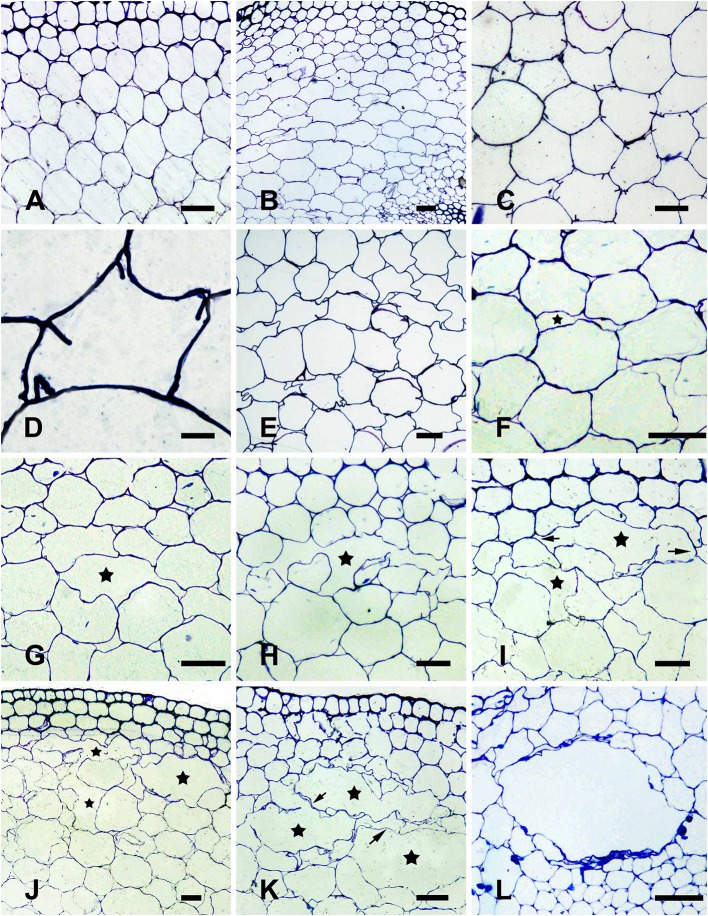Figure 1.
Aerenchyma formation in H. annuus stems is induced through waterlogging. (A) Normal growth plant without WA treatment (control), showing little intercellular space in the cortex parenchyma; (B–L) WA-induced aerenchyma formation in seedlings waterlogged at different period of time. (B–D) Early phase of aerenchyma formation in the seedlings after 12 h of WA treatment; (B) Parenchymal cells become flattened; (C) Cell wall infolding (arrow) is observed; (D) Enlargement of (C). (E–G) Formation phase of aerenchyma formation; (E) The cell wall distortion and plasmolysis were observed after 24 h WA treatment; (F) Cell walls become sunken and little intercellular space (star) is observed; (G) The volume of intercellular space (star) is increased by evident sunken cell walls after 2 days WA treatment; (H–K) Expansion phase of aerenchyma in the seedlings after 3 days of WA treatment; (H) The surrounding cells (arrow) of aerenchyma (star) begin to degrade; (I) The cells around the cavity continue to degrade (arrow) to enlarge the cavity (star); (J) The cells (arrow) between adjacent aerenchyma begin to degrade; (K) Neighboring aerenchyma cavities fuse by cells fully degraded (arrow); (L) Mature phase of aerenchyma in the seedlings after 4 days WA (star). There are three different segments was analyzed for each state. Bars: D = 10 μm, the others = 50 μm.

